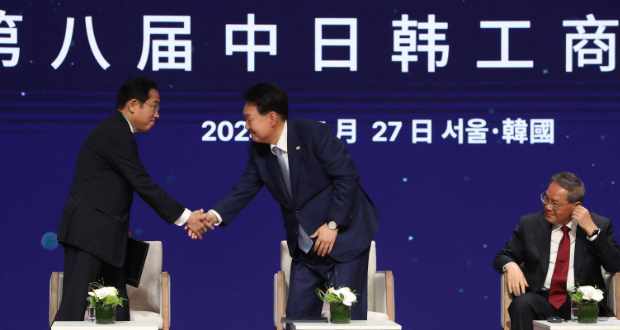While the summit’s joint statement demonstrated agreement on the need to promote people-to-people exchanges, sustainable development, economic trade, and public health, progress on thornier questions of military security and foreign policy remains stagnant. The absence of the Chinese president, Xi Jinping, further limited chances for movement.
The previous summit had been in 2019, followed by a nearly five-year hiatus marked by the COVID-19 pandemic and various unresolved bilateral disputes between Seoul and Tokyo as well as Seoul and Beijing.
Although the Chinese premier, Li Qiang, hailed the May summit as ‘a restart’ of cooperative relations, distrust between China and the US’s allies of South Korea and Japan is likely to continue, particularly on issues such as North Korea’s denuclearization.
Competing interests and domestic politics
Expectations of the three-party summit were dampened even before it began by a series of bilateral meetings held shortly before. The meetings brought to the fore competing state interests amid the constraints of domestic politics and increased tensions between China and the US.
With respect to the latter, for instance, the Chinese foreign minister, Wang Yi, accused South Korea earlier in May of supporting Taiwanese independence and denied China’s involvement in the forced repatriation of North Korean defectors in China.
Meanwhile, the proactive approach of South Korea’s President Yoon Suk Yeol towards easing his country’s tumultuous relations with Japan has borne fruit on a bilateral level but left him with problems at home.




